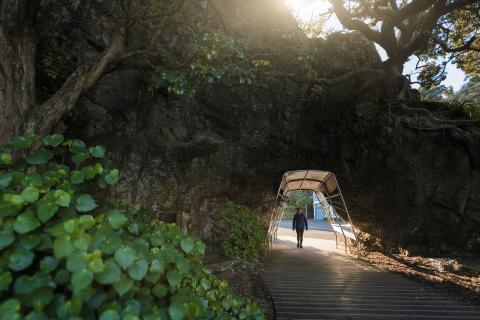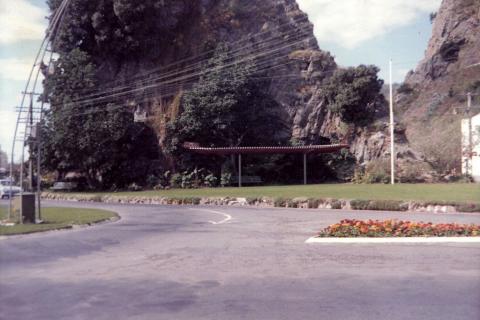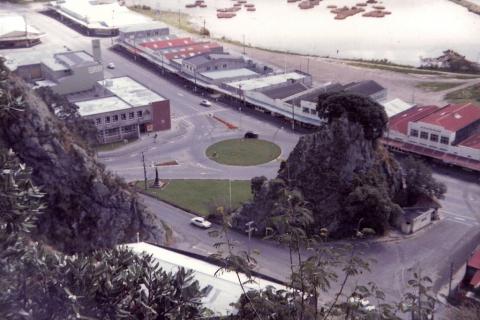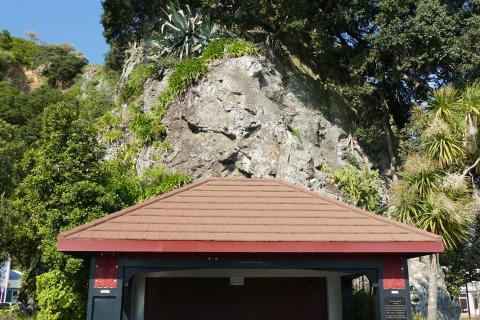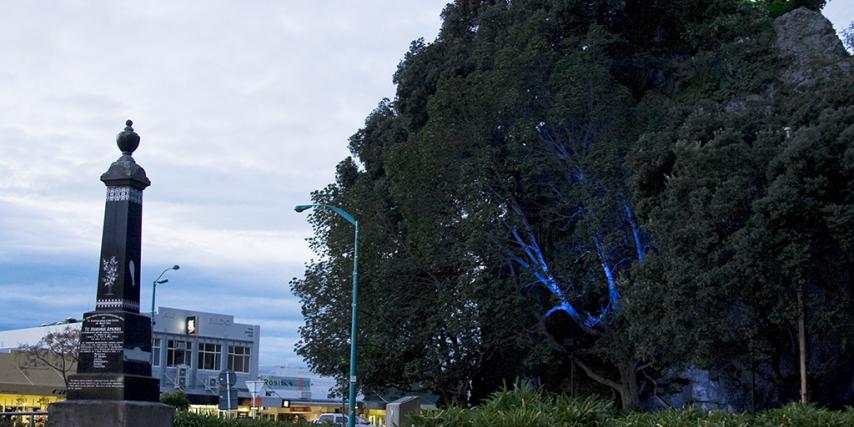
Pohaturoa
In ancient times, Pohaturoa was born through the union of Tane and Hinetuparimaunga, known as Te Kahui ki Uta. Ngāti Awa's spiritual, physical and ancestral connection as tangata whenua is to Pohaturoa.
Ngāti Awa have always performed ceremonies of birth, death, war and other important matters at Pohaturoa. In earlier times its higher levels served as repository shelves for the bones of the distinguished dead. The archway in the rock, which was once a cave, is called Te Arikirau. Here, the tribal tohunga would perform moko (tattoo) rituals.
The Waiewe Stream, which now flows beneath pohaturoa, was used to initiate young warriors into manhood, and baptismal rituals were performed upon children of high rank.
The present karaka trees that stand on the north side of Pohaturoa are said to be descendants of the trees brought here by the Mataatua waka.
On 16 June 1840, Ngati Pukeko chiefs signed the Treaty of Waitangi at a place near the western side of Pohaturoa. Each year on that same date, Ngāti Awa descendants celebrate the signing and recognise its importance with a dawn ceremony.
In July 1920, Pohaturoa became the Whakatāne Borough's official war memorial to the men who fell in the great World War from 1914 to 1918. At the front of the lawn facing Pohaturoa stands a memorial for Te Hurinui Apanui, paramount chief of Ngāti Awa who died on 24 May 1924.
Today Pohaturoa rock remains an important landmark to all members of the Whakatāne community. This natural feature adds to the unique character of the township and is regarded as a symbol of peace between Māori and Pakeha, merging the past, present and future, blending the old world with the new.
Contact Details
The Strand
Whakatane
New Zealand
